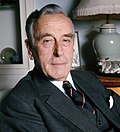| This article is part of a series on the |
| Politics of India |
|---|
 |
Sixteen individuals have served as head of state of India, from the independence of India in 1947 to the present day. The current head of state of India is Droupadi Murmu, elected in 2022 after being nominated by the National Democratic Alliance.
Contents
- Monarch of India (1947–1950)
- Governor-General
- President of India (1950–present)
- Standards
- Notes
- References
- External links
From 1947 to 1950, the head of state under the Indian Independence Act 1947 was the King of India, [1] [2] who was also the monarch of the United Kingdom and of the other Dominions of the British Commonwealth. The monarch was represented in India by a governor-general. India became a republic under the Constitution of 1950 and the monarch and governor-general were replaced by a ceremonial president.























